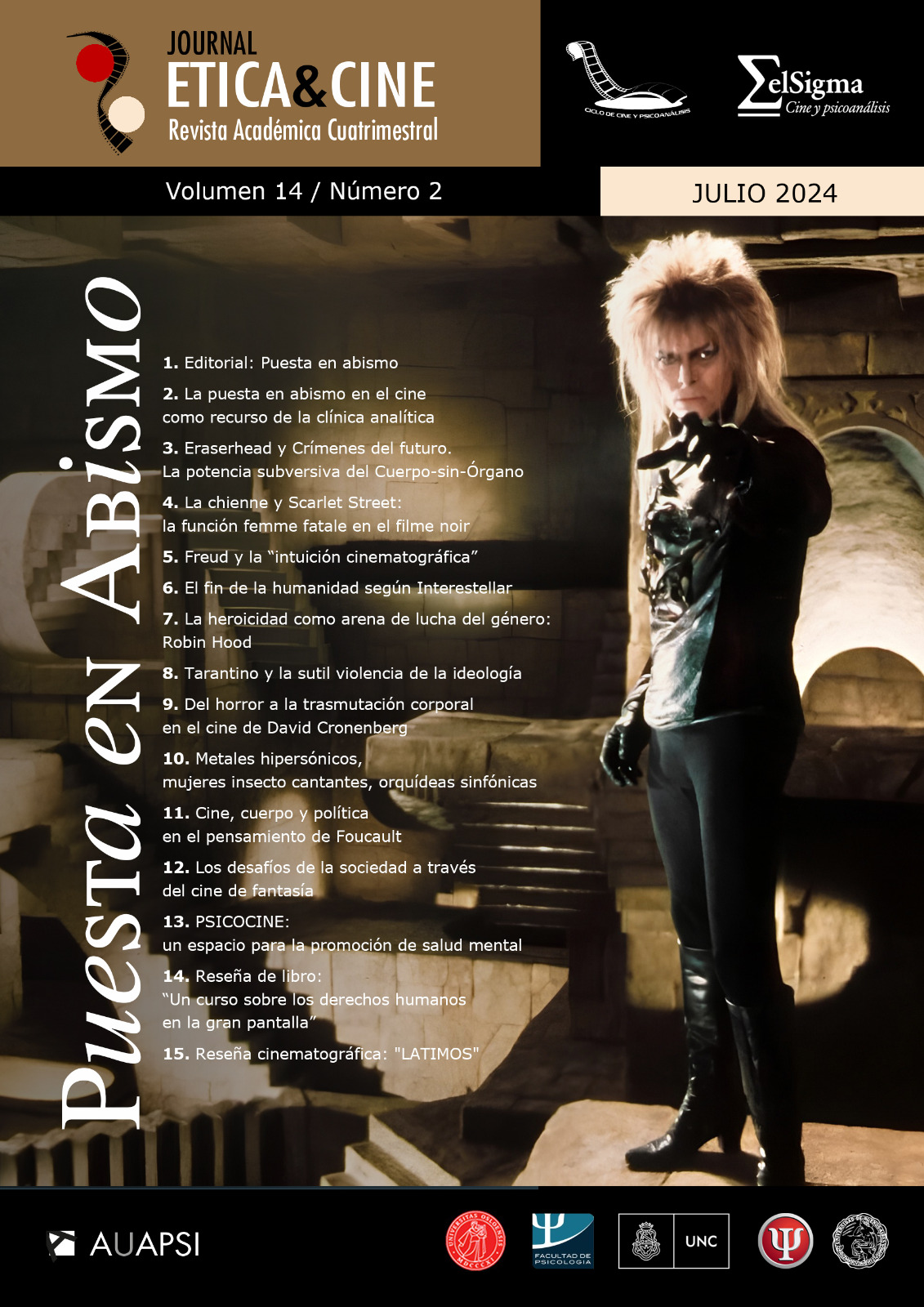Hypersonic Metals, Singing Insect Women, Symphonic Orchids. Hybrid Bodies
DOI:
https://doi.org/10.31056/2250.5415.v14.n2.45762Keywords:
Sci-fi, Cronenberg, Cinema, World, Post-genderAbstract
The article proposes a reflection based on different literary works from science fiction, to establish an analysis focused on the tension between the biotechnological field and human subjectivity. Focusing on two works by James Graham Ballard, the iconic short story collection Vermilion Sands and his novel Crash, the author presents an intertext with film and literature. Based on a dialogue with the filmic version of Crash, directed in 1996 by David Cronenberg, and with the critical work of Donna Haraway, she introduces a hypothesis related to both the dimension of corporality and gender aspects in fictional narratives.
References
Ballard, J. G. (1973) Crash. Jonathan Cape, UK. Edición en español: Ballard, J. G. (1984): Crash, Ed. Minotauro, Barcelona.
Ballard, J.G. (2001). Complete Short Stories. London: Harper Perennial. Edición en español: Ballard, J. G. (2013): Cuentos completos, Ed. RBA Libros Trad. De Manuel Manzano Gómez & Rafael González del Solar.
Haraway, D. (2003): Companion Species Manifesto: Dogs, People, and Significant Otherness, Prickly Paradigm Press. Edición en español: Haraway, D. (2010) "Manifiesto de especies de compañía: Lo que significa vivir con perros, científicos y personas en el siglo XXI", traducido por Jaime Arrambide, Editorial Cátedra.
Haraway, D. (1988) Situated Knowledges: The Science Question in Feminism and the Privilege of Partial Perspective. Feminist Studies. Vol. 14, No. 3 (Autumn, 1988), pp. 575-599. Published By: Feminist Studies, Inc.
Downloads
Published
Issue
Section
License
Copyright (c) 2024 Ética y Cine Journal

This work is licensed under a Creative Commons Attribution-ShareAlike 4.0 International License.
Los autores que publiquen en Ética y Cine Journal aceptan las siguientes condiciones:
Los autores/as conservan los derechos de autor © y permiten la publicación a Ética y Cine Journal, bajo licencia CC BY-SA / Reconocimiento - Reconocimiento-CompartirIgual 4.0 Internacional. La adopción de esta licencia permite copiar, redistribuir, comunicar públicamente la obra, reconociendo los créditos de la misma, y construir sobre el material publicado, debiendo otorgar el crédito apropiado a través de un enlace a la licencia e indicando si se realizaron cambios.

Este obra está bajo una licencia de Creative Commons Reconocimiento-CompartirIgual 4.0 Internacional.




